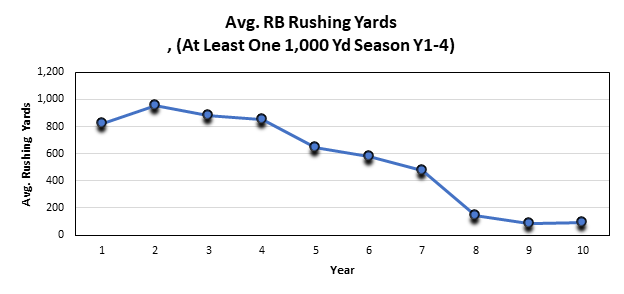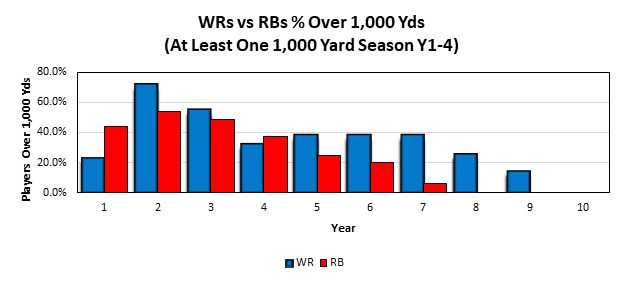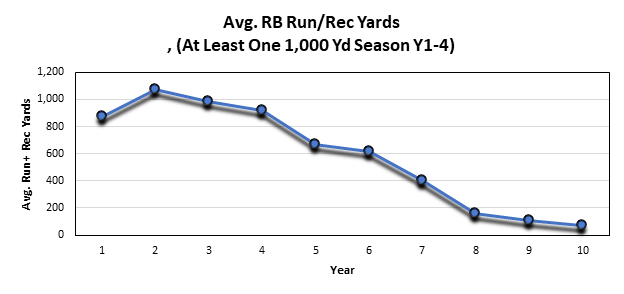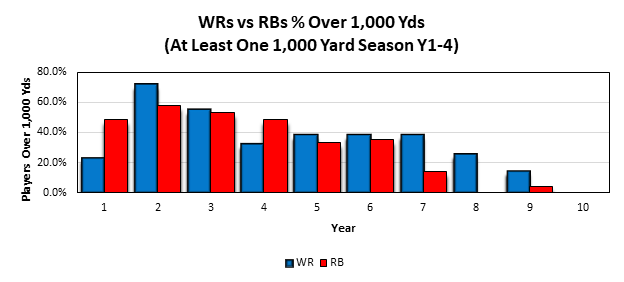In keeping with the running back discussions I wanted to add a little more context to the argument that a big part of the reason why running backs don’t get paid in free agency or at the end of a rookie contract is because of the way in which the performance of the position on average declines over time. What I did here was go back and look at every running back who entered the league since 2011 and followed a career arc for the players in terms of rushing yards as well as rushing and receiving yards. To keep things more relevant to the discussion I am only focusing on players who passed a specific threshold at least once during the first four years of his career. In both categories the cutoff I am using is 1,000 yards.
First let’s look at the average rushing performance of the players who hit at least 1,000 rushing yards one time in that four year period.

On average there is a very even performance in the first 4 year before a very steady decline should be expected from years 5 through 7 and then most drop out by year 8. The high end performances also drop. Here is how the position compares to the wide receiver position when using the same 1,000 yard cutoff.

Wide receiver is generally a position teams are too bullish on but the reward on that position is very different than what we see with RBs. While RB holds up very well in years 1 through 4, the wide receiver market has given around a 40% chance of hitting 1,000 yards in the first few years past those rookie seasons. Running backs drop off into the 20% range and then fall apart. It might be reasonable to say that year 8 for a very good wide receiver would be the equivalent of year 5 for a running back.
What if we run the numbers including receiving yards for the running backs?

This is more or less the same curve which should be expected since a bulk of a running back’s production comes from the run game which has diminished over time, but we do get a bit of a different story where we look at the reward aspect. Again, here is the comparison to the receivers.

While the rushing performance declines and many of those players drop out those who do catch the football have a bit more stable performance. For those who catch the ball there should be some expectation of performance beyond the rookie contract, however the long term is still not there.
Now teams generally do not pay simply because a running back can catch the football. The primary reason for paying the player is the rushing performance. More specialized players have generally been paid in the $6 million range compared to the $12-$16 million those who put up monster rushing numbers and some receiving numbers have received. So while teams are not going to put big value on the receiving yards it does give some idea as to the type of players who may still be effective post the rookie contract.
Overall there are limited options. Relative to other positions they are high performers as rookies and that continues for a few more years. It is that early performance that is probably a reason behind teams continuing to draft running backs in the 1st round since it is much less risky than other positions and can make an immediate impact. But the peak years are all in those rookie seasons. The usage and effectiveness is not there as time goes on and you run the risk of having to force the ball to an underperforming player simply because of the contract and that never leads to a good result.